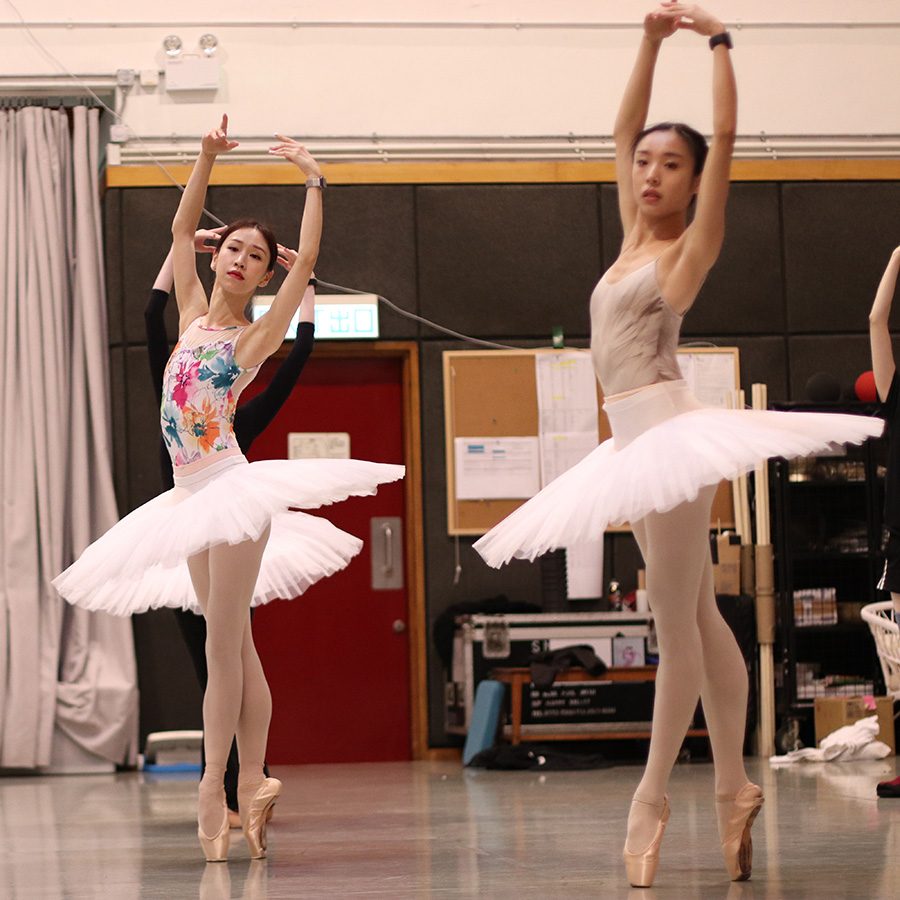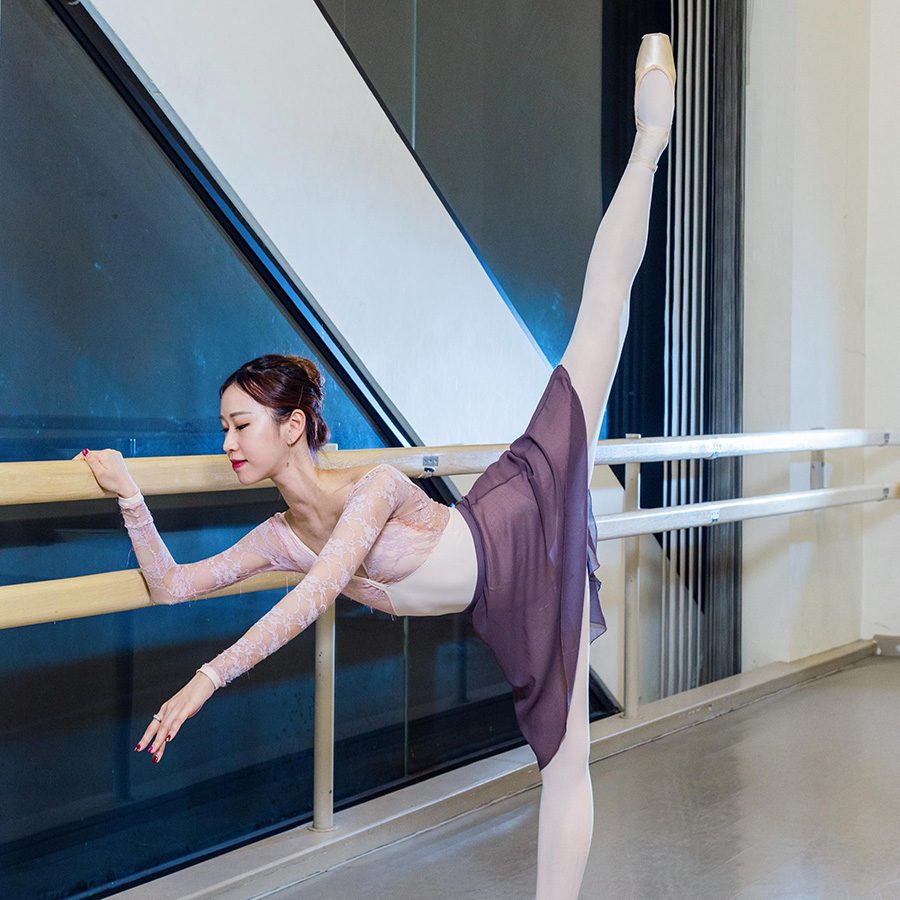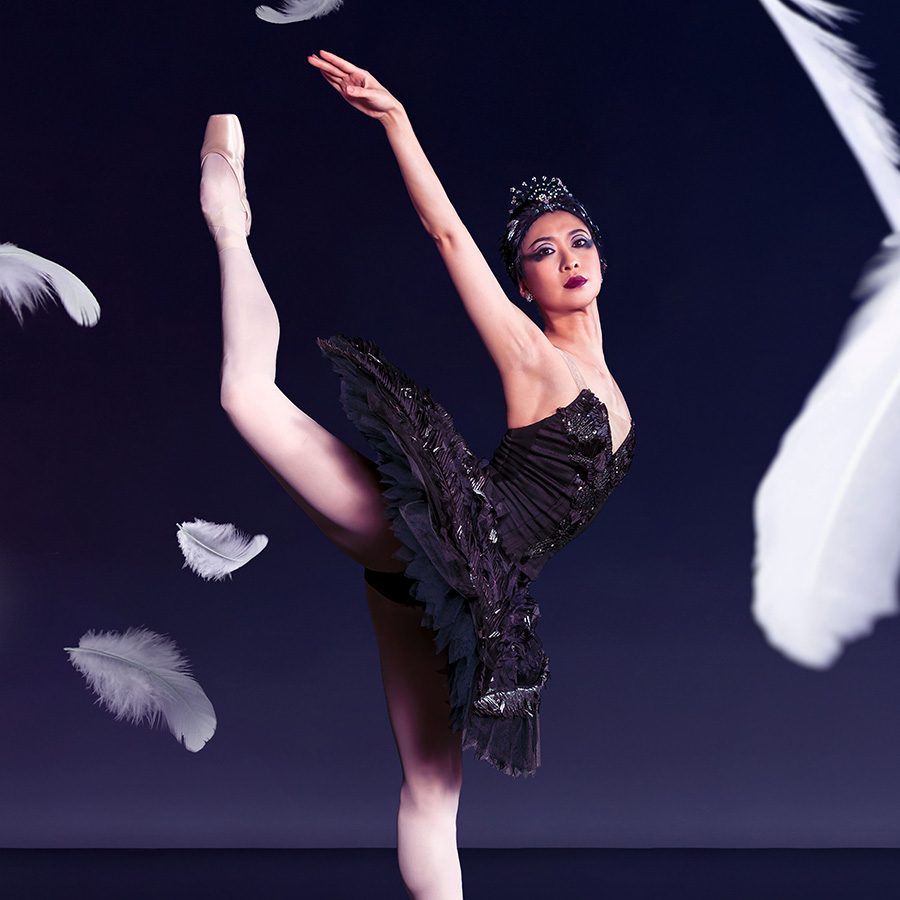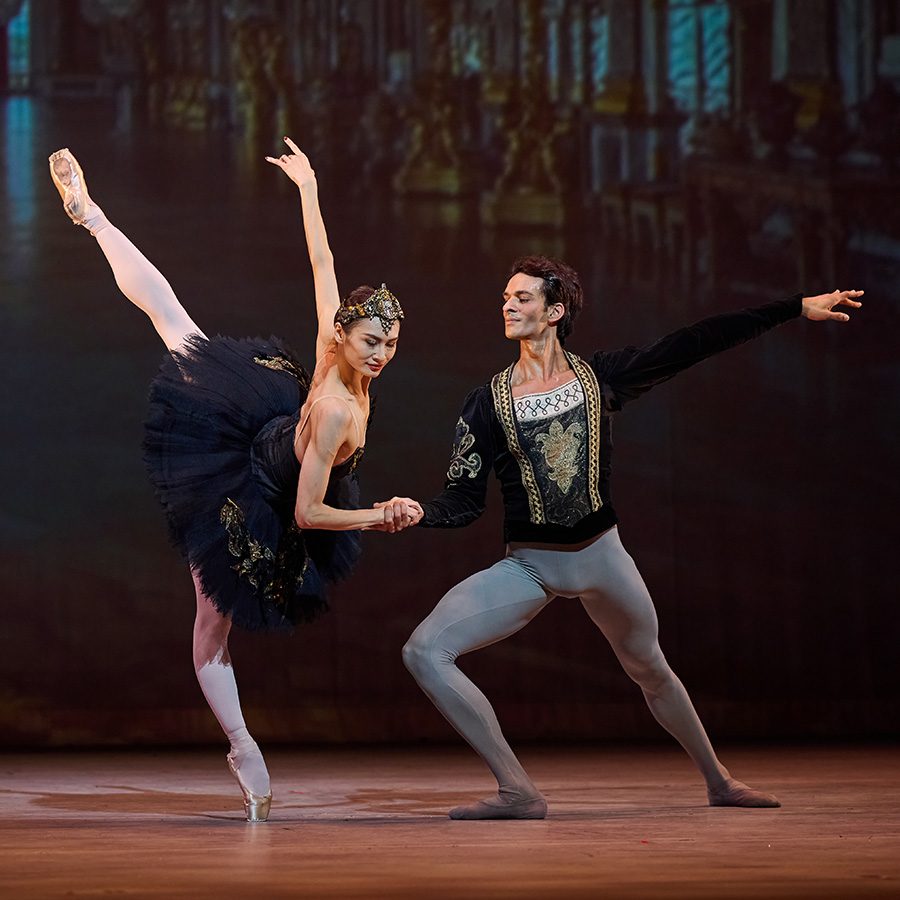What’s one thing you’d like people to know about your job?
For Peggy Lai , who’s worked with Hong Kong Ballet for 12 years now, it’s that dancing is a full-time job – not just a recreational activity as some might assume.
“I’m afraid to tell others much about my job sometimes,” she admits. Not for lack of passion – she clearly has plenty – but because of a lack of understanding from those whose contact with ballet may only go as far as lessons in childhood.
So, what does a typical work week look like for Lai? From Monday to Friday (and sometimes on weekends), 9.30am to 6pm with a strict one-hour lunch break, Lai and her fellow dancers are in the studio, rehearsing.
What most distinguishes a professional dance career from a typical office job is the physical toll it takes. So, it’s important for dancers to maintain their condition. That’s why each day begins with a morning class.
Treated as sacred, this early warm-up session is crucial for staying in good form and preventing injury, and gives Lai the chance to evaluate how she’s feeling that day. The company goes through exercises at the barre before moving to the centre floor and running through dozens of technical combinations, working up to turns and then jumps.

“For more junior dancers, this is when they build their technique, so they’ll put a lot of effort into it. For those getting older like me,” she laughs, “our stamina is more limited, so I’ll put just 25 per cent into the morning because I have to last until 6pm.”
Ageing as a ballet dancer has given Lai, who’ll be turning 33, much to reflect on in terms of her health and the experience she’s gained in the profession.
“You really feel your athletic ability start to decrease after the age of 28. At the same time, your artistry and mastery of how to deliver a good performance only improves,” Lai explains. “Of course, injuries are part of the job.
“I don’t expect to leave the profession with a fully healthy body – it’s hard to avoid issues like muscle overuse. Therefore, it’s important to support your health by paying attention to nutrition, going to physiotherapy and getting sufficient rest.”
Having also sustained a back injury at one point in her career, maintaining her wellbeing, as well as her passion and ability to dance, is always top of her mind. To do all that, having sufficient resources is important.
A team of in-house physiotherapists look after the dancers’ physical condition, though limited space at the Hong Kong Cultural Centre studios means dancers sometimes have to trek to Central or Wong Chuk Hang to get treated.
Lai rested for around a month while recovering from her injury, but that didn’t simply mean lying down at home. She still needed to do daily exercises to retain stamina, making the transition back to dance smoother.
After her injury, Lai began paying more attention to other aspects of her health, such as diet. She visited a nutritionist, who recommended her a diet higher in protein. So now, particularly in the leadup to a performance, she turns to foods like chicken breast and protein shakes, and says she has noticed the difference it makes for both her energy and recovery.
“If I can, I want to continue dancing for as long as I can.”


Of course, each dancer has their own dietary and exercise requirements to execute their part. While Lai likes to eat rice to fuel up, others might prefer a salad, protein bar or even just a cup of coconut water so they won’t feel too full to dance. Male dancers occasionally even squeeze in a gym workout during lunch to build additional strength for the lifts they are required to perform.
Something Lai does think would give dancers greater longevity in the profession is more government support. “It would be helpful to get more funding for a better working environment, which otherwise has quite an impact on mental health and in turn our productivity.” Though she likes the dance studios, she’d appreciate having more personal space during breaktime, as opposed to having everyone crammed into the studio to eat while the pianist continues to practice: “I’d love to have a resting area, and a pantry.”
After the morning class, the rest of the day is spent rehearsing, whether it’s learning the routine for an upcoming production, perfecting a solo, or practising a group dance.
As soon as Lai gets home, her downtime looks like this: shower, eat, then laze on the sofa until it’s time to go to bed for a good night of sleep – something many of us can relate to.

During performance weeks, her routine is a little different. Friday is opening night, while Saturday and Sunday are double-show days. On these days, the workday starts and ends later, with a dinner break between performances from 5.30pm to 7.30pm. Things still kick off with a warm-up class, but this is followed by some free time to get into costume and have makeup and hair done.
Pre-performance, Lai sometimes goes down to the stage early to acclimatise herself to the environment – which is often colder than the dancers are used to – and work on steadying her breathing. “I need to feel the air and get used to the atmosphere onstage,” she says.


At the end of May, Hong Kong Ballet will be showcasing a new production of Swan Lake , with Matthew Ball and Constantine Allen , Principal Dancers of The Royal Ballet and Dutch National Ballet respectively, sharing the male lead role of Prince Siegfried.
Though Lai won’t be a part of the production, she describes the choreography as extremely demanding due to its length and technical difficulty.
For Ball, who has performed numerous main roles with internationally renowned dancers yet suffered a serious knee injury early in his career, maintaining his condition until performance day involves “a cocktail of exercises”, as well as yoga for mindfulness.
He also makes sure to never overdo things. “When it comes to getting ready for the big show, you have to be careful to scale back a bit, to make sure you can come back to peak for that big moment where it really matters,” he explains.
And while the longevity of a professional ballet dancer’s career may be limited, Lai is hopeful for the future. She eventually hopes to transition to teaching. Having recently completed a master’s degree in dance, she looks forward to advancing her knowledge in dance education.
She adds, “I want to continue dancing for as long as I can.”
More inspiration
Hong Kong travel information
- China – the Chinese Mainland, Hong Kong SAR, Macao SAR and Taiwan Region
- Hong Kong SAR - English
- Chinese Mainland (China) - English
- Taiwan China - English
- 香港特別行政區 - 繁體中文
- 中国內地 - 简体中文
- 中國台灣 - 繁體中文
- Africa
- South Africa - English
- Asia
- Bangladesh - English
- Korea - English
- Singapore - English
- Cambodia - English
- 한국 - 한국어
- Sri Lanka - English
- India - English
- Malaysia - English
- Thailand - English
- Indonesia - English
- Maldives - English
- ประเทศไทย - ภาษาไทย
- Indonesia - Bahasa Indonesia
- Myanmar - English
- Vietnam - English
- Japan - English
- Nepal - English
- Việt Nam - tiếng Việt
- 日本 - 日本語
- Philippines - English
- Australasia
- Australia - English
- New Zealand - English
- Europe
- Belgium - English
- France - Français
- Россия - Русский
- Denmark - English
- Ireland - English
- Schweiz - Deutsch
- Deutschland - Deutsch
- Italia - Italiano
- United Kingdom - English
- España - Español
- Nederland - Nederlands
- Middle East
- Bahrain - English
- Saudi Arabia - English
- United Arab Emirates and Qatar - English
- Israel - English





.renditionimage.450.450.jpg)


